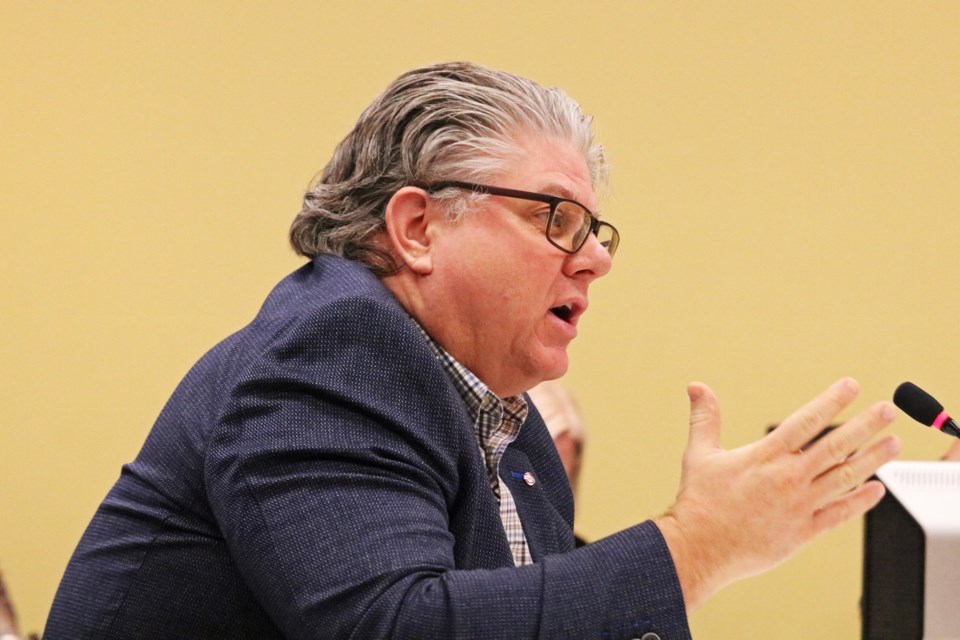After some review, the province has no interest in changing the proposed design of the interchange for the Highway 400-404 Link (Bradford Bypass) at Sideroad 10 in Bradford.
The review took place during the summer with the results being summarized in a report from town chief administrative officer Geoff McKnight, included as part of the Dec. 19 regular council meeting. This report recommended no further action be taken by the town.
That didn’t sit well with local resident, Brent Fellman, who lives near the proposed interchange.
“Why has the council defended other neighbourhoods from invasive designs from developers, yet in our case, our concerns appear to have fallen on deaf ears,” he asked during open forum, adding that he and other residents sent requests for updates about the review to the province but received no response.
Attending remotely, McKnight explained the process when the report came up later in the meeting, emphasizing that the ministry wasn’t required to review the design, but did so at the request of council.
“They did do a thorough report,” Mayor James Leduc said. “We think that this is a great job by the consultants.”
Ward 2 Coun. Jonathan Scott also pointed out that while the local council was trying to address residents’ concerns, the bypass is a provincial project over which council does not have jurisdiction.
“Council’s the monkey in the middle here,” Scott said. “This isn’t our project.”
The town originally requested the review in a letter from the mayor to Ontario's Ministry of Transportation (MTO) on May 23, based on direction from council following a presentation during the May 16 meeting from Fellman and other residents of the Arthur Evans Crescent neighbourhood.
Located just a few hundred metres northeast of the proposed interchange, the neighbourhood includes about 20 homes off of the crescent, as well as Sideroad 10 and Line 9.
Those residents wanted the partial cloverleaf design changed to reduce the impacts on their neighbourhood and improve safety, proposing the loop ramp in the northeast portion of the interchange be replaced with a directional ramp.
On June 7, the MTO directed the project team to review an alternative design that would still meet the province’s requirements while incorporating ramps similar to what residents requested.
The project team then compared the two designs based on highway requirements, traffic, property impacts and safety, but ultimately found the new design to be worse with less traffic capacity, more conflict points with increased likelihood of collisions and reduced intersection spacing — all while requiring 10,751 square metres of additional property, with 10,706 sq. m coming from Henderson Park, for which the town has expansion plans.
During open forum, resident Audrey Tucker, who was also part of the group that presented in May, acknowledged the importance to the town of the park and the use of its soccer fields, but argued the continuous impacts to residents living near the interchange were just as key.
“We’re talking about impacting less than four per cent of the total (field) hours used in a year at the expense of impacting our neighbourhood,” she said.
“Henderson Park is important to us, as your homes are important to you,” Leduc said, noting that in a letter to the town on Oct. 18, the MTO said it “is committed to explore the possibility of providing berms and/or vegetation to further create natural separation” between the highway and the residential neighbourhood.
Ward 4 Coun. Joseph Giordano suggested members of the project team need to walk the site with residents to help explain where the berm and other features would be located and how they would mitigate the impacts to nearby residents.
“I completely understand and side with the residents on this one,” he said. “This is where people live and this is very important. I’m not satisfied with this.”
Still, Giordano acknowledged the work that went into the review and that the Sideroad 10 interchange wasn’t originally part of the MTO’s plans for the bypass, but instead added at the request of the prior council in April 2021.
“We are where we are today. We need the Bradford Bypass,” he said.
Ward 7 Coun. Peter Dykie agreed with the necessity of the bypass, noting the traffic demands of future growth, but hoped nearby residents would have more opportunities to work the with the ministry on the berm and other mitigation measures.
A report created by AECOM on behalf of the province claims the alternate design would not have changed the number of residential properties the ministry would have needed to expropriate along Sideroad 10.
While the final environmental assessment report was made available in November and Minister of Finance Peter Bethlenfalvy’s fall economic statement confirmed preliminary work will continue next year, the bypass’s final design is yet to be determined.
— With files from Patrick Bales




